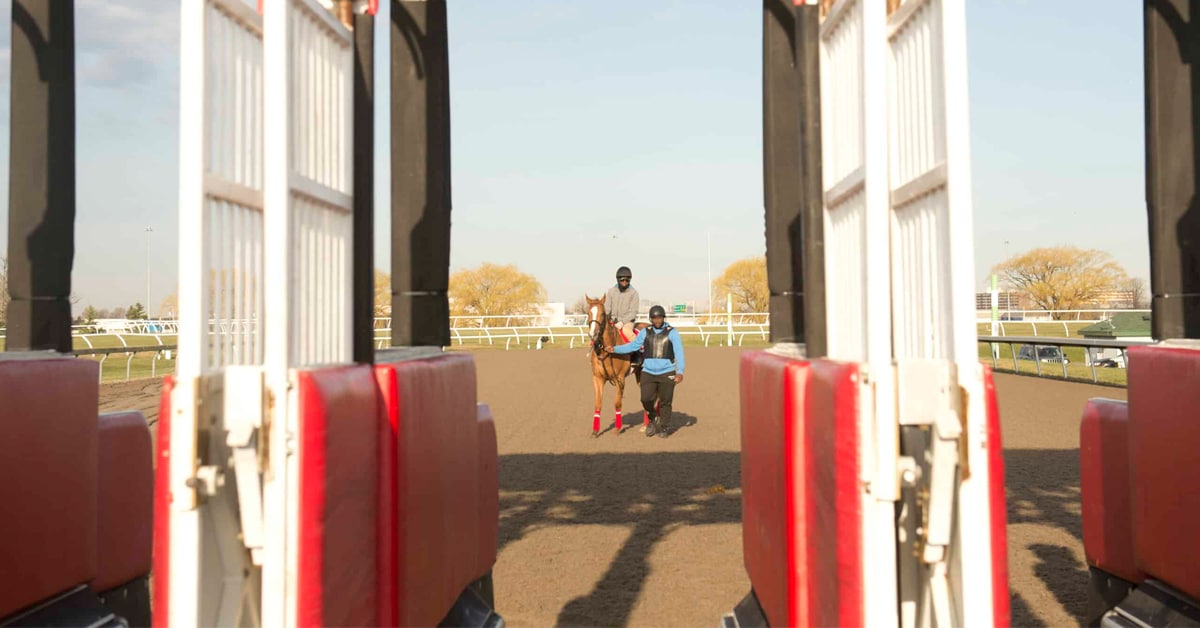To what lengths will an artist go to paint a picture? Michelangelo remained perched on a scaffold from 1508 to 1512 to paint the ceiling of the Sistine Chapel in the Vatican. While working in 1818 on The Raft of the Medusa (Le radeau de la Méduse), which depicts the desperate survivors of the frigate Medusa which had been shipwrecked off the coast of Senegal, French painter Théodore Géricault rented a studio near a morgue so he could study at leisure dead bodies and amputated limbs. To paint her most celebrated work, The Horse Fair, the 19th century French artist Rosa Bonheur took a decidedly unconventional approach.
Rosa Bonheur (1822-1899) lived in the patriarchal Victorian era, in which a woman, who trespassed outside the traditional boundaries of feminine modesty and propriety, invited the scorn and distrust of society. Dress codes were clearly defined: women were clothed in long skirts, bodices and bonnets; no bright colours were allowed unless one were a lady, no fine materials for children, no fur collars, no buttons on women’s clothes except between wrist and elbow. Local law prohibited women from wearing trousers in public except for medical reasons. Women did not have the right to vote and art institutes were closed to them. But Rosa Bonheur ignored the conventions and, through her talent and audaciousness, became one of the most celebrated artists of her day.
The daughter of a painter and the eldest of four children, all of whom were to become artists, Rosa lost her mother at a young age and spent her childhood at various boarding schools from where she frequently escaped and wandered off to the Bois de Boulogne to watch the horses being walked. Eventually, after many dismissals, she returned to her father’s home where, free at last to indulge her own interests, her determination to succeed as an artist took solid form. To learn from the eminent masters, she copied paintings at the Louvre, but it was the art featuring animals that most inspired her.
Her desire to improve her knowledge of anatomy and master the craft of animal painting took the 20-year old Rosa to the nauseating underworld of Parisian slaughterhouses. The rivers of blood, foul smells, and terrified squeals of doomed beasts combined with the vulgar remarks of uncouth men would surely have discouraged many. But not so for Rosa. Following proper procedure, she applied for and was granted permission from the prefecture of police to dress as a man in public, a sartorial habit of freedom she never abandoned.
Bonheur chose as a subject the Paris horse fair, an open-air extravaganza on the Boulevard de l’Hôpital in the southern part of the city. In her masculine garb, she visited the horse market several times a week and continued her studies at the slaughterhouses. What came out of these unconventional working methods was the monumental The Horse Fair painting, completed in 1853, a dazzling fast-paced look at a 19th century horse market. Two spectacular Percherons in the centre, one black, one gray, rear defiantly. The painter’s depiction of the horses is stunning: brawny muscles ripple under their glossy hides, their powerful legs and long necks astonishingly fluid and graceful for such huge creatures. She has masterfully captured the raucous atmosphere of the place and the enthralled spectator can almost hear the thunder of the great horses’ hooves, their neighing mixed with the handlers’ shouts.
The Horse Fair grabbed the public fancy. It was a sensation at the 1853 Salon; it then toured some other French cities before travelling to London and then on to the United States. In 1855, it was sold to a British publisher and dealer. Today it hangs in The Metropolitan Museum of Art in New York.
With the success of The Horse Fair, Rosa Bonheur’s fame spread. She met Queen Victoria and became one of her favourite artists. Her paintings were in high demand and she prospered financially. She was considered the most famous woman artist of her time and became the first woman to receive the Grand Cross of the Legion of Honour. She moved to a château near Fontainebleau but famously continued to dress in men’s clothes and keep her hair closely cropped. It was no longer a professional strategy; it had become part of her lifestyle.
The true story of The Horse Fair – and indeed of Rosa Bonheur’s life – was not that she had to pretend to be man in order to paint her great equine work of art, but that she refused to hide who she was as a woman.
More from Canadian Thoroughbred:





